Keen To Step Out Of My Comfort Zone, I Took Up Boxing For a Month. And Honestly? I’ve Never Felt Stronger
Float like a butterfly, sting like a bee.


As with most good ideas, the decision to take up boxing came to me in the shower. I’d just finished my third Pilates class of the week and, while I'd still enjoyed it, I had a nagging feeling that I was starting to become a little stale.
Like many of us growing up, my life was full of variety. Every evening brought a new after-school club; think netball on Mondays, athletics on Tuesdays, swimming on Wednesdays, football and even, for one slightly off-piste term, country dancing.
If you're nodding along right now, consider this. At what point did your hobbies start to narrow, or even fade away? Why is it that save a few trending sports (running and padel, I’m looking at you), adult fitness tends to revolve around the same familiar pillars of the gym, the spin studio, and the Pilates mat?
Don’t get me wrong, I love Pilates. I love yoga. And I enjoy running and strength training, too. But after years of rotating the same routine, I’d slipped into autopilot. At my best, I was going through the motions but at my worst, I was starting to dread the workouts I used to love.
I knew I needed to shake things up with something that would push me mentally as well as physically, and pull me firmly out of my comfort zone. As someone who has always been relatively sporty, I knew that I could pick most things up fairly quickly, but that there was always one area that had scared me off: combat sports.
You see, though women’s boxing has grown massively in the UK since it became an Olympic sport in 2012, from just 23,300 women participating in pre-London Games to nearly one million in 2025, the sport still carries a masculine stereotype which I’d definitely internalised.
Committed to overriding my own internalised preconceptions, I enrolled in a month of boxing training at JAB: a community boxing club I’d seen all over my social media, and which several female friends had raved about.
Celebrity news, beauty, fashion advice, and fascinating features, delivered straight to your inbox!
Was I nervous? Absolutely.
Was it worth it? A hundred times over.
Scroll on for the full story of my four-week boxing journey. And if stepping outside your comfort zone is your thing, you’re in good company, because our team at Marie Claire UK has tried everything from dance cardio and tennis to bouldering and ballet.
I tried boxing for a month - and wow, it taught me a lot
What Is Boxing?
At its heart, boxing is a combat sport that involves two opponents fighting with their fists in a ring. While men’s boxing has been part of the Olympic Games since 1904, it took over a century for women to be included, with female boxing only making its Olympic debut at the London 2012 Games.
The sport is split into amateur and professional divisions, each with its own rules, scoring systems, and goals. Amateur boxing, which is typically made up of three rounds, with competitors wearing padded headgear, culminates at the Olympics. Professional boxing, on the other hand, sees fighters compete without head protection, often over longer rounds, in pursuit of national or world titles.
Though it’s been around for centuries, boxing has stepped firmly into the fitness mainstream over the past decade. Boutique boxing gyms have popped up across major UK cities, borrowing elements from competitive training programmes to create workouts that blend functional strength, bag work and shadow boxing - all designed to boost overall fitness, without the pressure of stepping into the ring.
What Are The Benefits of Boxing?
If you’ve ever watched the sweat pouring from a boxer in the 12th round, you’ll already have a sense of just how physically demanding the sport can be.
“Boxing combines endurance with high-intensity intervals, and is a real test of full-body athleticism,” says George Veness, Founder and Head Coach at JAB. A former amateur boxer with four national titles to his name, Veness explains that this full-body work comes from the way that boxing combines resistance, cardiovascular fitness and bodyweight strength training. “The bag provides the element of resistance, whilst the high work rate and rep count that comes with the circuit style element of boxing, means that you need strength, agility and endurance throughout class,” he says. “With consistent training, you’ll regularly be working your full body, resulting in a long and lean physique.”
Veness is quick to add, however, that the benefits of boxing stretch far beyond the physical, a fact supported by countless research studies which have connected the sport with reduced stress, improved mood, self-esteem and confidence. “There’s a huge release of emotional stress that comes when you hit a bag,” says Veness, who adds that “there’s also an enormous element of empowerment when you find your boxing rhythm. You’ll find yourself in a flow state, which is incredible not only for performance but also for focus. When you’re fully immersed in what’s in front of you, you forget about everything else that’s going on in your life.”
Isabel Kelly, Co-Founder of women’s boxing club, Queen Bee Boxing, agrees, adding that there are specific long-term physical advantages, which make boxing a great sport for women in particular. “The resistance training element of boxing is a good way to increase bone density and strength, which is particularly important as women approach menopause when bone health can dramatically decline due to the decrease in oestrogen levels.”
Who Is Boxing Best For?
Though historically, boxing has been a male-dominated sport, both coaches are quick to point out that boxing is for everyone, and that no one should feel excluded based on gender, background or prior experience.
In fact, Veness says that there’s something for everyone to be found in the sport. “Boxing is beneficial for so many groups of people, and what you gain from it really depends on where you are in your life, and what speaks to you. It’s particularly suited to anyone with that inner fighting spirit within them, as well as for people of an older age, who may be losing their coordination."
It's this connection between mind and body, which Veness alludes to, which makes boxing so powerful, not just as a workout but as a therapeutic tool. In fact, a number of studies have even shown an association between boxing training and a reduction in the number of falls reported by Parkinson’s patients, with further research connecting boxing with improved cognitive function in those recovering from strokes.
Is There Anyone Who Should Avoid Boxing?
If you’re pregnant, recovering from an injury, or managing a medical condition, both experts agree that it’s best to speak to your coach before donning the gloves. But that doesn’t necessarily mean boxing is off the table.
As Kelly explains, an injury isn’t always a barrier. “There are plenty of adaptations that can be made, which in some cases can even benefit certain injuries, particularly when it comes to long-term joint conditions,” she says.
The key is to be upfront. Let your coach know about any limitations or concerns before the session starts. They’ll be able to guide you safely, offer tailored modifications, and ensure you’re still getting the most out of your workout, without pushing through pain or risking further injury.
What Are The Most Common Mistakes Made By Beginner Boxers?
Unlike sports like netball or football, boxing isn’t something most of us learned in PE, so it’s entirely possible to reach adulthood without ever throwing a punch. So where do you even begin? And more importantly, how do you avoid making rookie mistakes you don’t even know you’re making?
According to both coaches, it all starts with technique. “The most common thing I see is people getting ahead of themselves,” says Kelly. “Forming bad habits thanks to incorrect technique early on is the fastest route to injury, which is why I always coach people to learn the basics well.”
Veness agrees, emphasising that many boxing-related injuries stem from improper handwork. “Instantly, we teach people how to throw their shots. Once you’ve mastered how to turn your hand over, have a decent clench in the fist and land with your knuckle, you’ve put yourself in a good position to progress without injury.”
It’s not just what you do during the session, either. Both coaches stress that the work you do before and after training plays a big role in keeping you injury-free. “It might be boring, but warming up and cooling down correctly, with plenty of stretching, is vital to ensuring longevity in the sport,” says Kelly.
For Veness, pre-session muscle activation is just as important, particularly for protecting the shoulders. “Rotator cuff injuries are common across shoulder-dominant sports such as tennis, golf or boxing, which means it’s important to activate the muscles that run across the back of your shoulder joint. These pull the shoulder back into place, give you good posture and protect your joint from injury. Incorporating some banded and bodyweight strengthening exercises within your training programme will help here.”
The Top Beginner Boxing Tips, From A Qualified Boxing Coach
If you’ve made it this far, chances are you’re thinking about giving boxing a go yourself, so we asked the experts to share their top tips for beginners.
“There are three main basics I teach everyone who walks into the club,” says Veness. “The first is your balance. This comes from the distance between your feet - they should be just wider than shoulder-width apart, with a line running through the centre of your stance so your feet are slightly offset, knees soft with a good bend.”
The second, he says, is your shape. “Your weight should be centred between the legs, with your elbows in, hands up, and shoulders relaxed.”
“And then it’s time to focus on mastering the jab,” he continues. “It’s the main shot in boxing - it sets up all your other punches, helps you re-centre your balance and establishes your rhythm. Keep your hands together by your chin, then throw your jab straight out, like your arm is travelling down an imaginary pipe towards your target.”
For Kelly, the key is staying relaxed, and remembering to enjoy it. “If you get too tense, you’ll tire quickly and forget what to do,” she explains. “Instead, let your hips and shoulders do the work. You’ll get far more power that way, rather than trying to muscle it through your arms. Ultimately, have fun with it and don’t take yourself too seriously.”
With the coaches’ words bubbling away in the back of my mind, it was time to put theory into practice.
I Took Up Boxing For a Month, And After Four Weeks Of Training, I’m Impressed By The Workout
Weeks one to two
Like any good first-timer, I arrived early for my first official boxing session at JAB, a boutique boxing club in Central London. I’m not someone who gets gymtimidation, but there is definitely a first day of school feeling when you walk into an unfamiliar workout space, and I wanted to give myself time to scout out the changing rooms before the rush of regulars arrived.
The first thing I noticed was the air of confidence which seems to be being pumped from the air conditioning. There are no awkward niceties here. Everyone, from the front-of-house team to the coaches and the clientele, is assertive and direct, offering eye contact, clarity of instruction and a distinct we-mean-business energy.
As for the gym itself, it was like stepping straight onto the set of a Quentin Tarantino film, with vintage photographs of boxing legends lining the wood-panelled walls and glowing red signs above two sets of double doors signalling the entrance to the training rooms.
It’s this touch of theatre, which permeates the space and its people, that makes JAB feel more like an elite boxing club than a boutique fitness studio. Whilst I might wander into some of my workouts bleary-eyed and half present, at JAB it’s quite apparent that a mediocre effort won’t cut it. The implicit message communicated at every touchpoint is that “you are a boxer amongst boxers”, with a reason for showing up and something to gain.
If all this sounds more intimidating than enjoyable, I hear you. I was daunted too. But my advice would be to embrace it because, beneath the bravado, the boxing community couldn’t be more supportive.
At the start of class, all new faces were called to the front, where Coach Seb ran through the basic stances and shots we’d be needing throughout class. A word of warning: it’s a whistlestop tutorial which can feel like a lot to take in, but as I discovered, boxing really is something you pick up more with practice and feel, so don’t worry if you struggle to follow along. After we’d all (sort-of) got to grips with the basics, Seb then addressed the whole room, demonstrating the specific “combos” *read: a sequence of punches* that we’d be practising over the next fifty minutes. All classes have two specific combos, which are interspersed with freestyle, speed and power shots.
Once in the room, the format is similar to Barry's, just without treadmills. Half the class starts with six rounds on the ground, the other on the bags, before swapping over to reach 12 rounds in total. I’ve done plenty of HIIT circuits in my life and wanted to keep half an eye on the boxers before I actually had to throw a punch myself, so I thought I’d feel more comfortable starting on the ground.
Spoiler: I was wrong. Yes, the ground sequence at JAB involves your typical cardio and strength intervals (although operating at a much higher intensity than many dedicated HIIT classes I’ve been to), but there are also regular intervals of shadow boxing. For those unfamiliar with boxing jargon, shadow boxing means that you’re punching the air, rather than a bag or opponent.
Having been able to count on one hand the number of times I’d thrown a punch in my lifetime, I found that shadowboxing didn’t come naturally at all. I felt completely off balance and more like I was tottering around on my toes than I was grounded, strong and powerful. I would come to learn later that this is a completely normal feeling as you’re learning to box, as so much of it is about rhythm, balance and shape, but on that first day, I felt extremely self-conscious.
By the time I moved onto the bags, I knew I needed to let some inhibitions go. I picked one at the back so that I could get to grips with things without too much scrutiny. Instead of focusing on nailing every combo, I just tried to build up some flow and power, whilst listening to the cues coming from the coach. For the most part, it was a little disjointed and unnatural, but by round 12 I was starting to get a bit of a taste of how boxing should feel. That is - instinctual, rhythmic, and exhausting.
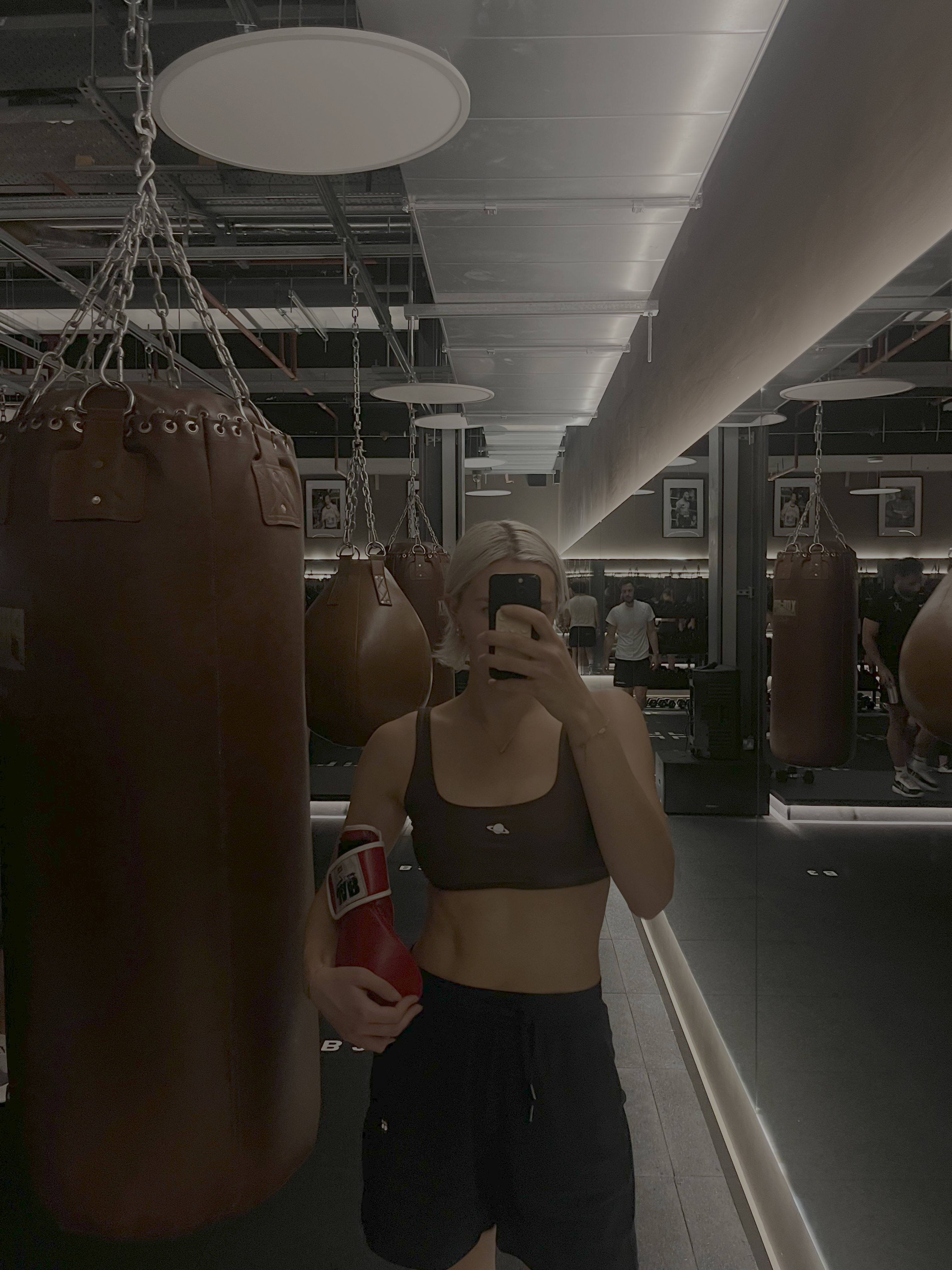
Ash at a morning boxing class during her month long challenge. The first day at JAB leaves you feeling like a fighter
Fast forward to three days later, and I was still aching. My shoulders, specifically, had never screamed at me so much and walking downstairs was a slow, sore process, providing me with evidence that boxing works muscles I’d clearly been neglecting to activate in the last few months.
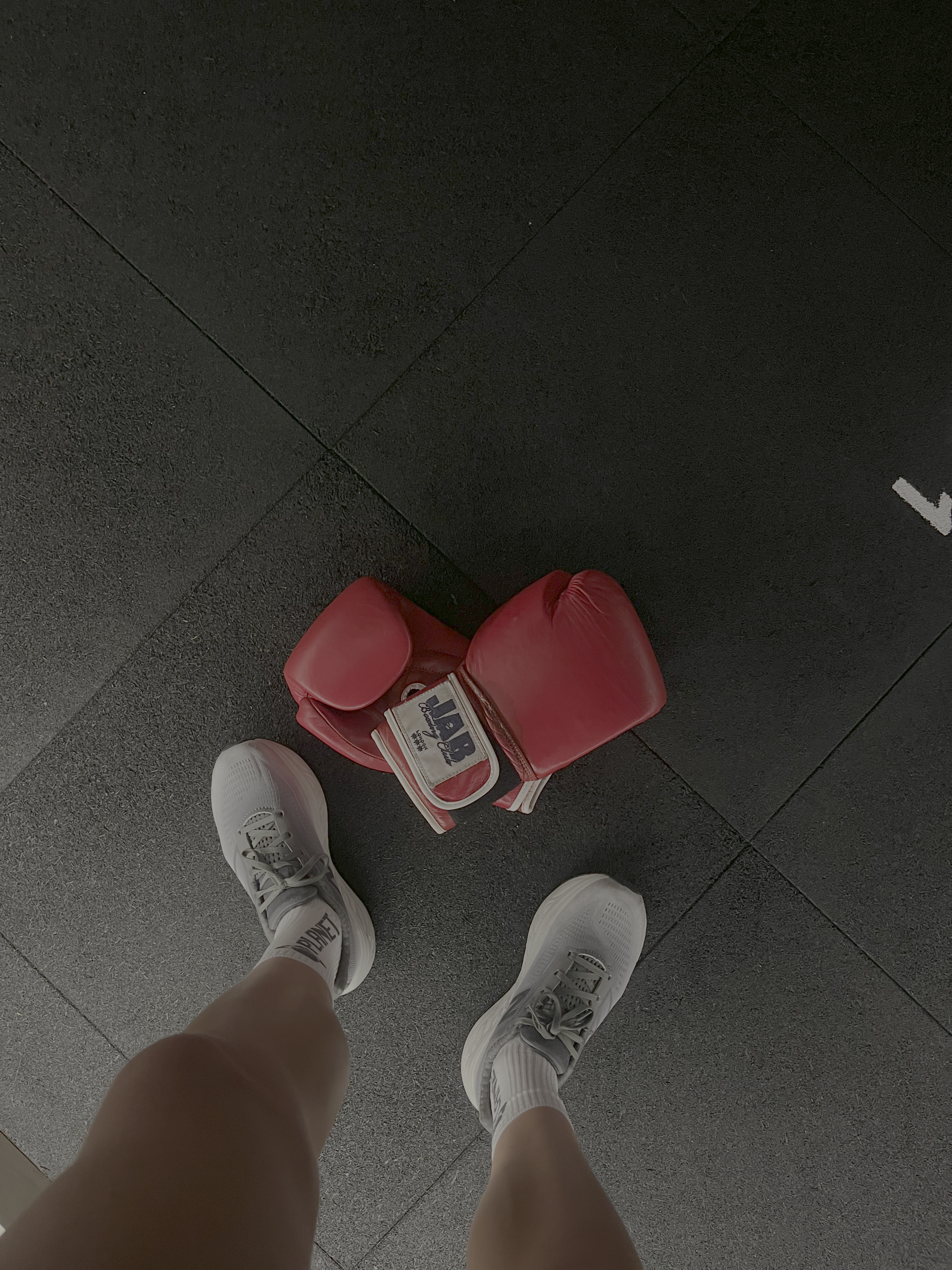
Ashleigh prepares for six rounds on the bags
Week two rolled around faster than expected, and my body was still sore from the previous week’s initiation. And yet, despite the fatigue, I was excited to pick up on the feeling I’d left off at the end of my first class. Sessions at JAB have different specific focuses, and this time, I’d booked onto a core and agility class with Head Coach, George.
By rookie error, I found myself in the front row. I’d hoped to slip under the radar whilst I found my feet, but thanks to my dodgy stance, George clocked me immediately and came over to correct my form. Though at first, I was embarrassed to be under the limelight, his tweaks really helped, and hearing him bark praise in my direction provided me with a fresh surge of motivation.
By round six, I’d fully caught the boxing bug. The intensity was even higher than the first time around, but I loved the precision and pace of the workout. The bag combo (two jabs, a backhand straight and a front hook for those wondering) had a rhythm I could really get into. I started to let go, hit harder, and trust the process.
As any coach will tell you, learning a sport is about so much more than technical training, and by the end of week two, I was ready to explore the wider JAB programme, which includes both conditioning and recovery sessions.
Though I may have a history of athletics training, in the last few years, my strength work has been limited to studio classes and self-set gym sessions, neither of which have ever worked my body like the sport-specific programmes I used to follow. All that was about to change with my first Train session at JAB. Structured like a true athletic training session, Train sessions are broken down into a strength and hypertrophy phase, with all exercises repeated over multiple sets, and with every move coached with strict attention to form. There was no room for cutting corners - each squat, lunch and crunch went to the full range of motion, with a focus on alignment, muscle activation and control.
I was blown away by how much harder everything felt when my technique was on point. I have a tendency to compromise my form when no one’s watching, but with Zara’s constant reminders, there was an incentive to keep up a constant work rate.
Forty-eight hours later, my glutes were still on fire.
Week three to four
For session four, I was back in the boxing studio and determined to put George’s feedback into practice. Ahead of the session, I did some homework, realising I’d never actually paid attention to how real boxers move around the ring. I’m definitely a visual learner because studying the videos really helped, and immediately I felt more able to find my stance in the gym. With my feet widened and turned slightly less side-on, I felt the difference immediately and towards the end of class, something clicked.
I figured out that by timing my punches with the swing of the bag coming towards me, I could control the movement much more and get a much firmer hit on my target. From there, I focused on hitting with the top of my knuckles, lifting my elbows to create power. The difference was immediate and incredible, with so much more power coming from every shot I threw.
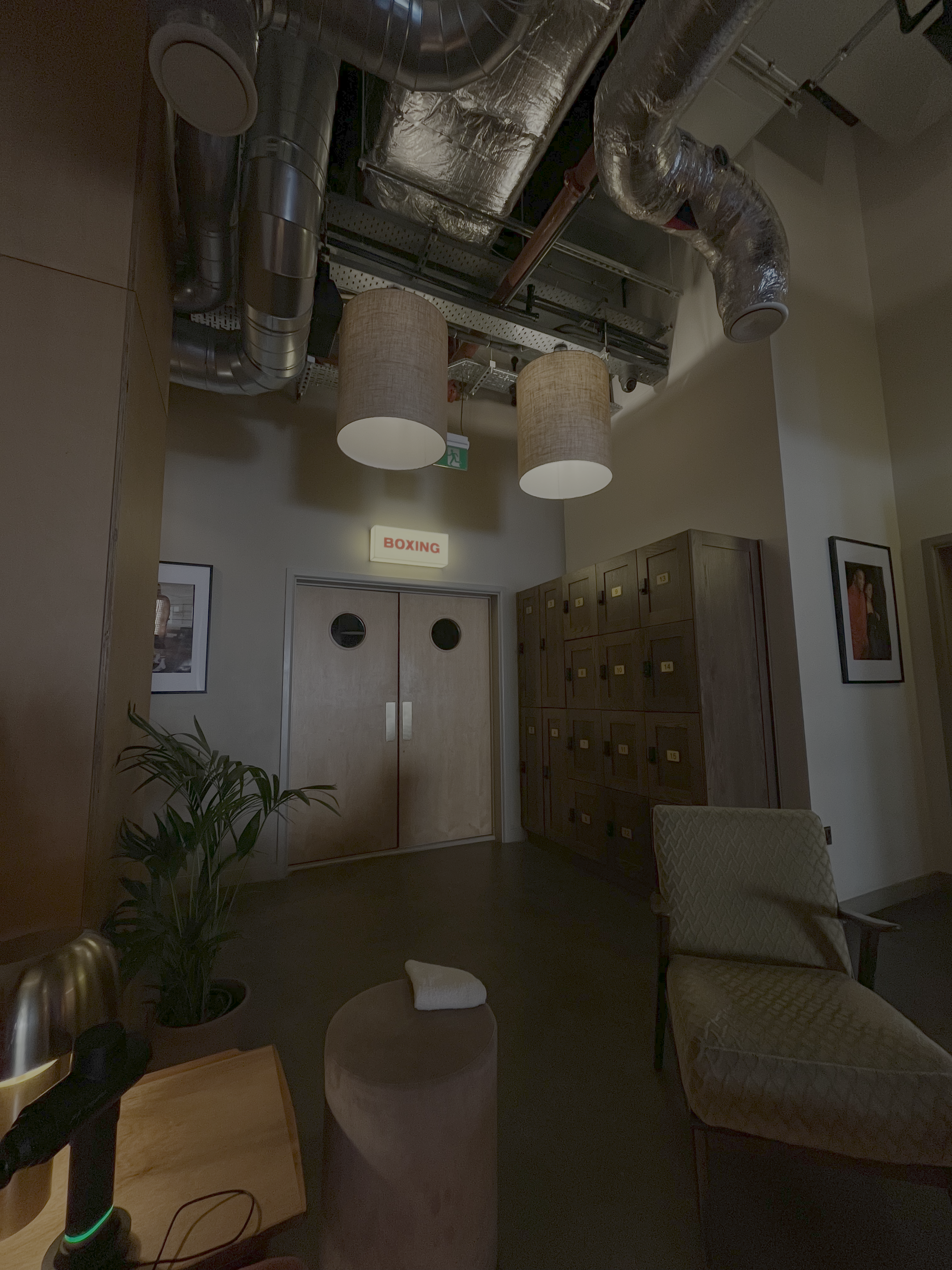
The lobby area at JAB feels like something straight out of a film
By week four, I’m a total boxing convert and am telling anyone who will listen that they must give it a go. And yet, I still had so much to learn about the physical and mental benefits of boxing. It was in a Train session with Coach Nichol that the latter really dawned on me.
Before I go any further, I know that time for reflection at the end of a class is not unique to boxing. You’ll find it in yoga, Pilates and sometimes even spin. But often momentary and a little cliché, I often find my mind wandering to the outside world, and the rest of my day.
But as we lay there post-workout, Nichol reminded us of the purpose behind these kinds of reflections. The work we do in the gym, she said, mirrors life outside it: hard, unfair and repetitive at times. But showing up, even when it’s difficult, is the success. It might sound cringe to read on paper, but in the moment, it really landed with me. Because boxing is hard. It’s humbling. You mess up constantly, feel awkward, and have to fight the urge to disappear at the back of the room. But it teaches you to keep going, and as I came to the end of my four weeks, I felt like I’d really accomplished something and connected with myself.
The Final Session
For my final session, I was shattered before I’d even walked through the door. But there’s something about the discipline of boxing that pulls you back in. You know how good it’ll feel afterwards, and I was keen to have that feeling one more time. I trained with Tom this time, and while my energy was lower, my confidence had grown. The combos flowed a little easier, I felt relaxed and able to let loose, moving around the bag more confidently and really bringing some emotion to the shots.
My final thoughts?
Boxing isn’t for the faint-hearted. It’s not relaxing, demure or mindful. It takes time to get the hang of, and you feel completely out of place at first.
But as a workout? It’s up there with the best I’ve ever done. In just four weeks, my arms feel stronger, my core more solid and my glutes? Well, let’s just say that pulling my jeans on is much harder than it was before.
As women, it’s incredibly important to strike the balance between impact-based strength training which supports our bone health, and lower impact sessions which help to calm our nervous system and protect our hormone health. For that reason, boxing won’t be something I turn to exclusively, but it will start to form part of my regular weekly routine.
And if I’ve had a tough day at work or an argument with a friend, you’ll know where to find me.
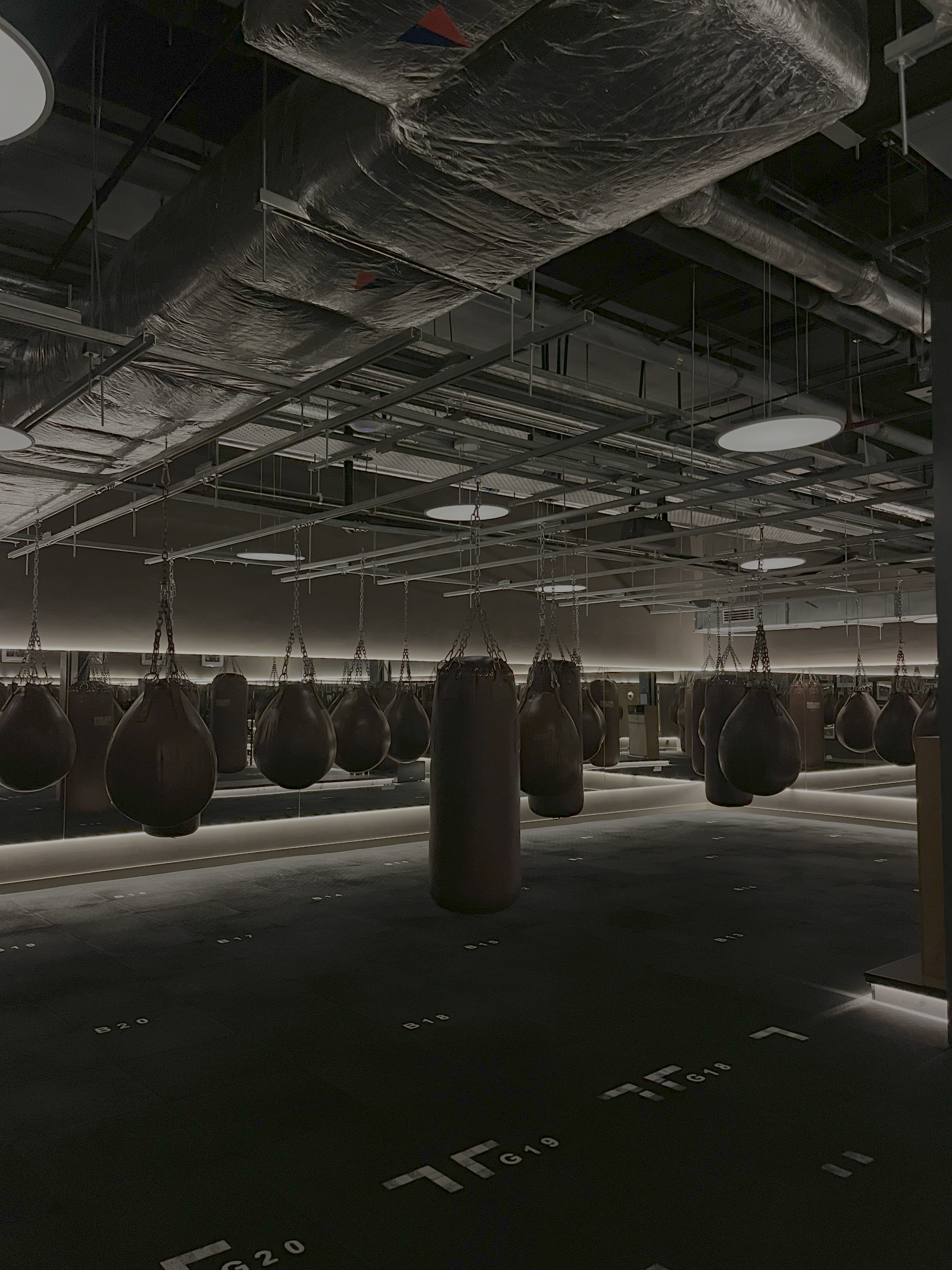
The calm before the storm
Shop MC UK Approved Boxing Gear now
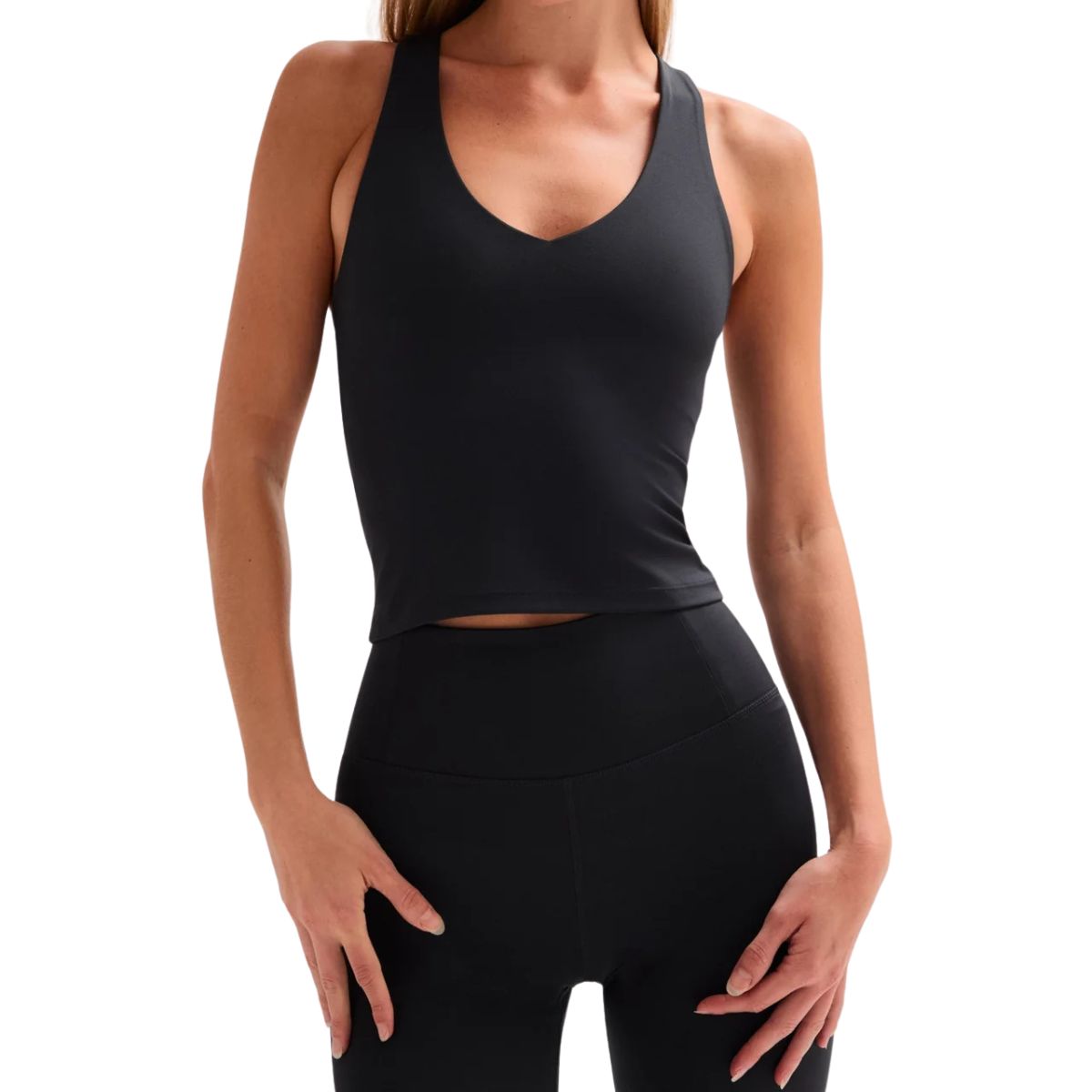
If you're trying out boxing, prepare to sweat, which means you need workout gear that lives up to the challenge. This sweat-wicking tank from Girlfriend Collective is an MC UK fave. Made with 90% recycled water bottles, it's lightweight, stretchy and has a built-in bra for additional impact support.
Are There Any Beginner Boxing Drills I Can Practice At Home?
Stepping into a full boxing class for the first time can feel daunting, so it can be helpful to get to grips with the basics at home. “Shadow boxing is a great way to do this,” says Isabel Kelly, Co-Founder of women’s boxing club, Queen Bee Boxing. “This essentially involves boxing a ghost, so set yourself in front of a mirror and practice throwing some punches so you can see your own technique.”
George Veness, Founder and Head Coach at JAB, agrees, adding that “everything in boxing starts with the feet. Before you start throwing punches, set yourself up in your boxing stance and practice stepping forward and back and side to side, all whilst maintaining a strong balance and shape.”
According to Veness, this practice of just moving around in the boxing stance helps you to become more aware and balanced when you start becoming more dynamic. “Awareness of your body is essential in boxing, so practising finding your balance, control and rhythm will help set you up for success.”

A former heptathlete, Ashleigh is a freelance journalist, specialising in women’s health, wellbeing and lifestyle, with words in Stylist, Cosmopolitan, Glamour and Marie Claire. She’s also the Co-Founder of Sunnie Runners, an inclusive London based run club.

